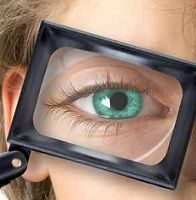Article
Prognosis Fairly Good for Kids with Juvenile Idiopathic Arthritis
Author(s):
Adulthood for juvenile idiopathic arthritis patients doesn’t eliminate the risk for uveitis-related visual complications, but a recent Dutch study reported that for most the outcomes appear to be “fairly good.†The caveat, however, was that one-third of the patients in study became visually impaired or blind in one eye as young adults.

Adulthood for juvenile idiopathic arthritis patients doesn’t eliminate the risk for uveitis-related visual complications, but a recent Dutch study reported that for most the outcomes appear to be “fairly good.” The caveat, however, was that one-third of the patients in study became visually impaired or blind in one eye as young adults.
In addition, “a fair amount of the patients suffered from ongoing uveitis activity and needed ongoing treatment as well as surgical interventions,” the authors added “Awareness of these findings is important for ophthalmologists and rheumatologists treating patients with JIA-uveitis, as well as for the patients themselves, in order to prevent these patients from becoming visually disabled even many years after their typical childhood onset of the disease. .”
Juvenile Idiopathic Arthritis or JIA used to be known as Juvenile Rheumatoid Arthritis. It is an autoinflammatory diseases and uveritis is an inflammatory eye disease, which can be one of JIA's comorbid conditions. JIA reportedly is the most common kind of arthritis in children. Risk factors for impaired vision include a younger age of onset for uveitis, and onset of uveitis before arthritis. Being male is another possible risk factor, the study said.
The Dutch researchers, led by Anne-Mieke J.W. Haasnoot of the University of Utrecht Medical Center, noted that not much is known about JIA-uveitis in adults. However, other studies have suggested that uveitis may continue in 30% to 63% of these patients, they said.
The Haasnoot study attempted to add to the knowledge base by reviewing the medical records of 67 patients with JIA-associated chronic anterior uveitis who were 18 or older and had been examined at the University of Utrecht Medical Center and at tertiary centers in Rotterdam, Leiden and Groningen from 1974 to 2015. The retrospective analysis looked at disease status at the check points of 18, 22, and 30 years old.
Improvements in medications since 1990 have given JIA patients diagnosed since then "slightly better" visual outcomes, authors said, but uveitis was still present in half those patients. At 22 and 30 years old in their worst eyes more than half were legally blind for the group treated before 1990. For the 22-year-olds treated after 1990, less than 30% were blind in their worst eyes. (There was insufficient data for the post-1990 30 year olds.)
For post-1990 18-years-old the benefits of new medications were even greater in their best eyes. The study explained that at 18-years-old four patients (8%) were in remission throughout the year None were legally blind in their best eyes and none had visual impairment there. A little over 20% were legally blind in their worst eye and but about 70% had no visual impairment in their worst eye.
Yet, with JIA-uveitis continuing as they got older a significant proportion of patients needed cataract or glaucoma surgery as adults, the study added.
Newer treatments also have a quality of life impact, the authors pointed out. The newer medications necessitate more visits to ophthalmologists and rheumatologists. For young women the immunosuppressive medications conflict with pregnancy.
“Our results document that JIA is not solely a disease of childhood, but that its activity, accompanied use of systemic medications, complications and additional visual loss continues in early adulthood,” the study said.
The study was published in the October 10 issue of PLOS ONE.
Related Coverage:





